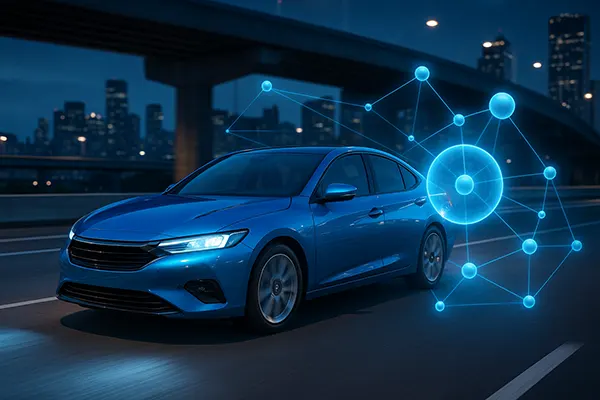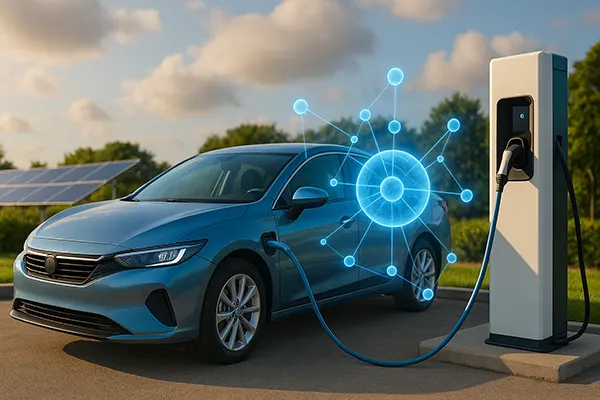
Quantum Security for Vehicles: How Quantum Key Distribution Will Transform Cyber Protection for Smart Cars
In 2025, connected and autonomous vehicles are no longer futuristic concepts—they are a reality on modern roads. These vehicles rely on complex communication systems that transmit vast amounts of data between cars, infrastructure, and cloud servers. However, as this network expands, so does the risk of cyberattacks. To address this growing vulnerability, Quantum Key Distribution (QKD) has emerged as a revolutionary solution capable of redefining cybersecurity for the automotive industry.
The Growing Need for Cybersecurity in Smart Vehicles
Smart vehicles depend on Vehicle-to-Everything (V2X) communication technologies, enabling them to share real-time data about traffic, weather, and road conditions. This interconnectedness enhances safety and efficiency but also opens new entry points for hackers. Traditional encryption systems, while effective today, may not withstand the computational power of quantum computers expected to become commercially viable within the next decade.
Cyber threats targeting vehicles have already been demonstrated in controlled environments. In one instance, researchers remotely accessed a vehicle’s braking system using vulnerabilities in its wireless network. Such scenarios highlight the urgent need for encryption methods that remain unbreakable even in the quantum era.
Governments and automotive manufacturers are now prioritising post-quantum cryptography. However, QKD goes beyond conventional protection by providing a fundamentally different mechanism—one rooted in the laws of quantum physics rather than mathematical complexity.
How Quantum Key Distribution Works in Automotive Security
Quantum Key Distribution operates by transmitting cryptographic keys through quantum particles, typically photons. The unique property of quantum mechanics ensures that any attempt to intercept these keys alters their quantum state, immediately revealing an intrusion. This means that car-to-car and car-to-infrastructure communication could achieve an unprecedented level of security.
Automotive networks using QKD could exchange encryption keys between control units, cloud systems, and roadside stations in a way that no classical algorithm can replicate. Even if a hacker possessed a quantum computer, the physical nature of QKD would make decryption impossible without detection.
For example, Toyota and BMW are investing in research partnerships with quantum communication firms to integrate QKD into their future electric and autonomous models. The goal is to ensure that as vehicles become smarter, their defences evolve accordingly.
Applications of Quantum Communication in the Automotive Industry
Quantum communication technologies are already being tested for secure over-the-air (OTA) updates. These updates are critical for modern vehicles, which often receive software improvements and bug fixes remotely. QKD could guarantee that such transmissions remain untampered with throughout the update process, reducing the risk of malicious firmware injections.
Another potential application lies in fleet management and logistics. Companies operating hundreds of connected trucks or taxis could use QKD to safeguard internal communication systems and protect sensitive customer data. In addition, future smart cities equipped with quantum networks could connect with vehicles via ultra-secure V2X links.
The combination of 5G and quantum technology is particularly promising. Quantum-enhanced 5G infrastructure could serve as the backbone for secure traffic coordination and autonomous navigation systems, where even microsecond delays or data breaches could have catastrophic consequences.
Challenges and the Path Toward Implementation
Despite its immense potential, integrating QKD into vehicles presents technical challenges. Quantum communication currently relies on specialised hardware, including photon sources and detectors, which must be miniaturised and made cost-efficient for automotive use. The need for stable transmission over long distances also poses a barrier, as moving vehicles require robust quantum repeaters and error correction mechanisms.
Standardisation and regulatory alignment are additional hurdles. The automotive industry must collaborate with telecom providers, governments, and quantum research institutions to establish unified protocols and certifications. Without these standards, global implementation will remain fragmented and limited to pilot projects.
Nonetheless, the rapid progress in quantum photonics and miniaturised optical components offers optimism. Companies like Toshiba and ID Quantique have already demonstrated portable QKD systems that could soon fit within vehicular architectures, paving the way for mass adoption.

Future Outlook: Building Quantum-Resilient Automotive Networks
By 2030, experts predict that quantum communication networks will extend across major transport corridors, connecting vehicles, infrastructure, and cloud services with end-to-end encryption. Quantum-safe vehicle architectures could become as fundamental to car design as airbags or anti-lock braking systems are today.
As national governments invest in quantum infrastructure, automakers that adopt QKD early will gain a competitive advantage. Such systems will not only enhance cybersecurity but also strengthen public trust in connected technologies, a critical factor for widespread adoption of autonomous driving.
Ultimately, quantum security is not a distant innovation—it is a necessity for the automotive ecosystem of tomorrow. As vehicles become data-driven entities on wheels, Quantum Key Distribution stands out as the key to ensuring their integrity, safety, and resilience in the quantum age.
The Role of Collaboration and Global Standards
The transition to quantum-secure mobility will require unprecedented collaboration between automakers, telecom providers, and quantum technology developers. Establishing interoperable frameworks is essential to ensure that vehicles from different manufacturers can securely communicate within shared infrastructures.
Several international initiatives, including the European Quantum Communication Infrastructure (EuroQCI) project, are already working toward this goal. By integrating QKD-enabled nodes into national transport networks, Europe aims to create a blueprint for secure automotive communication worldwide.
Through shared innovation and commitment to security, the automotive industry can transform potential cyber risks into an opportunity to pioneer the next era of technological trust and safety.
